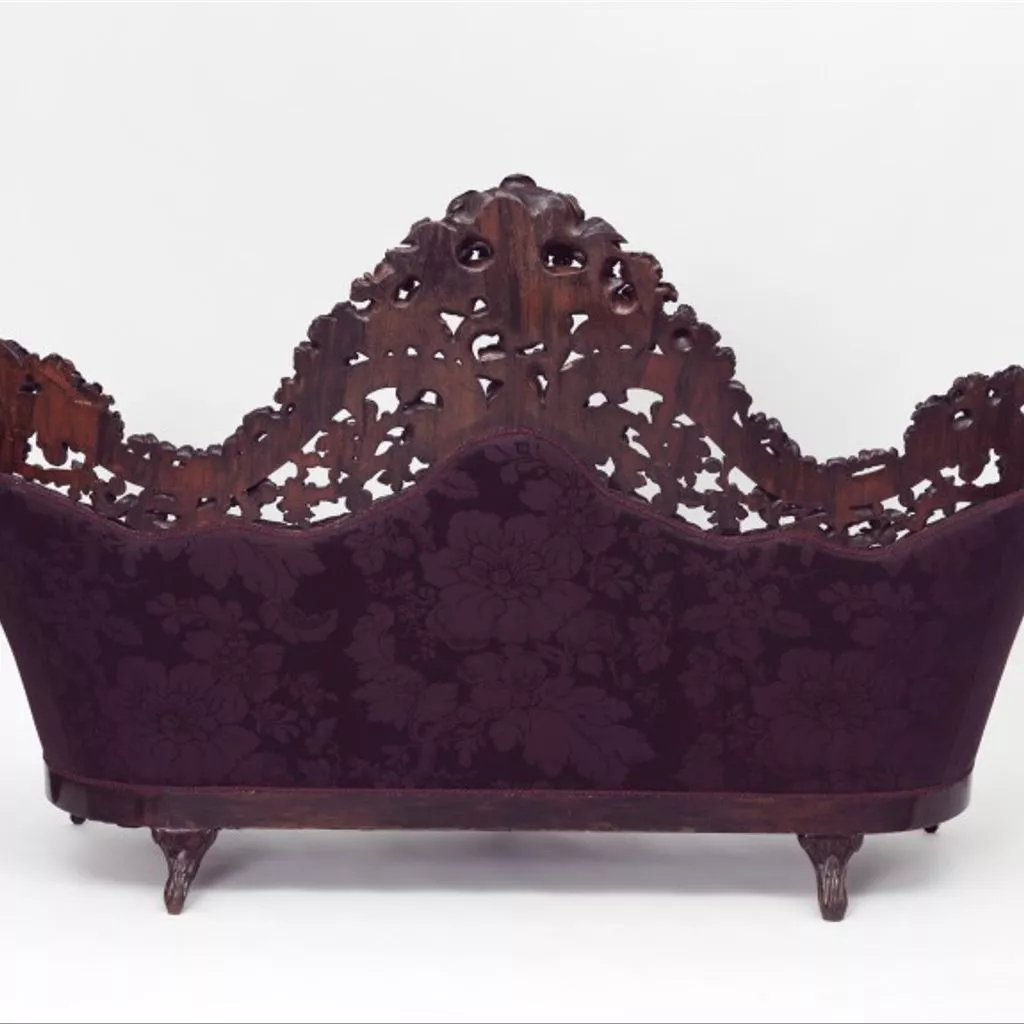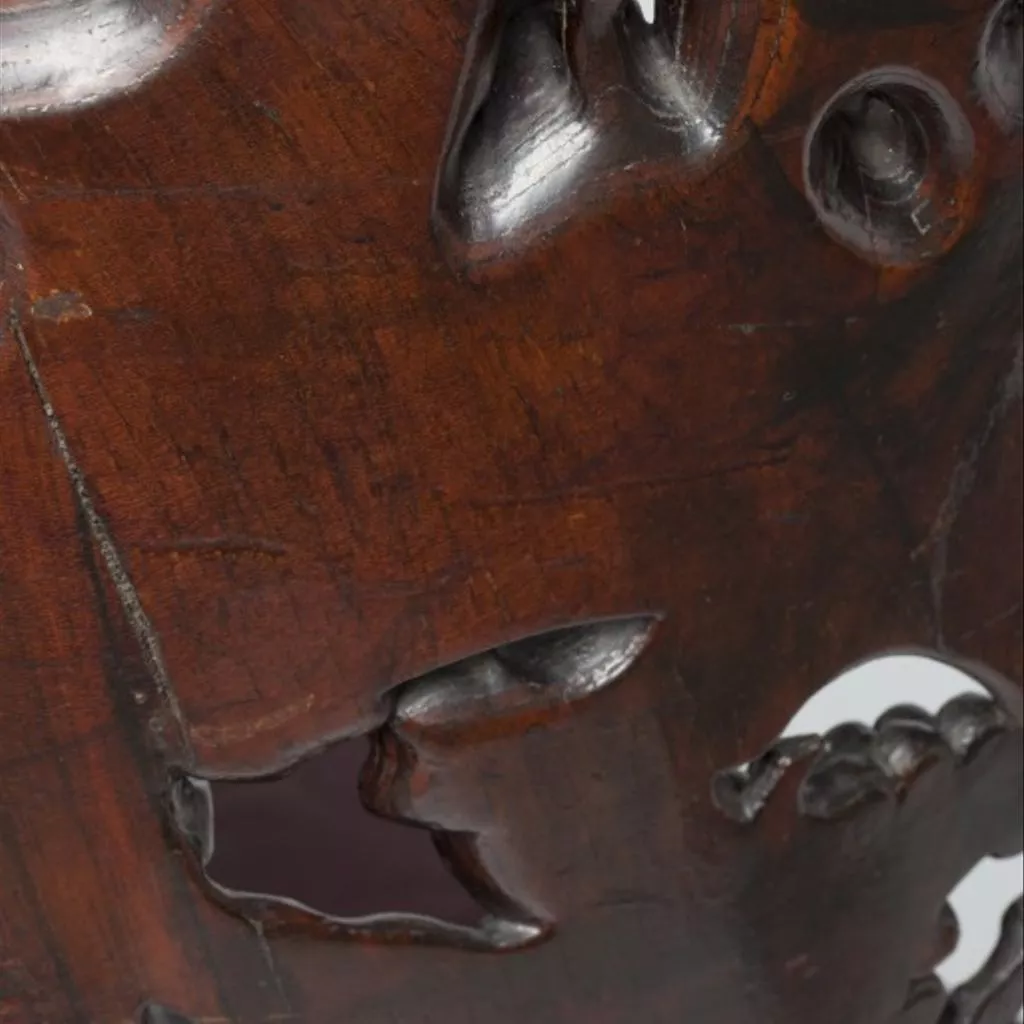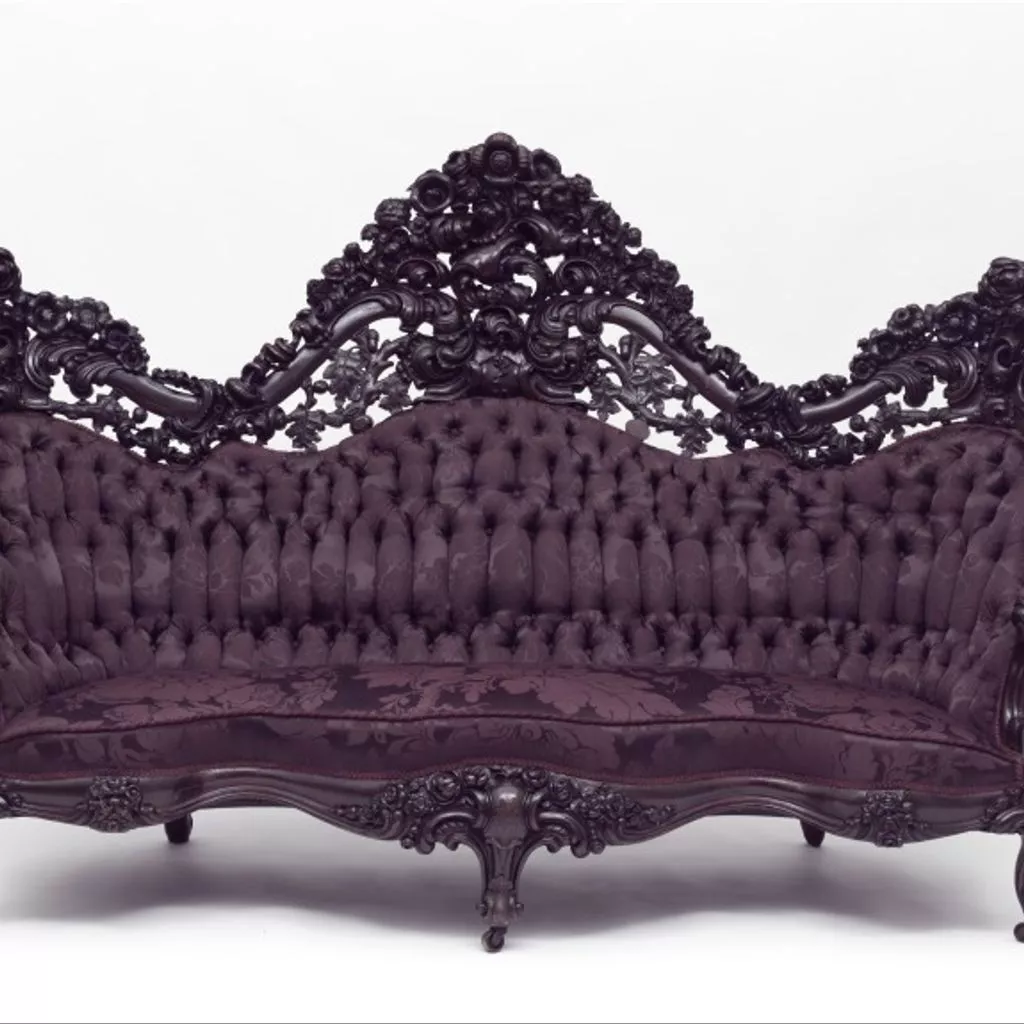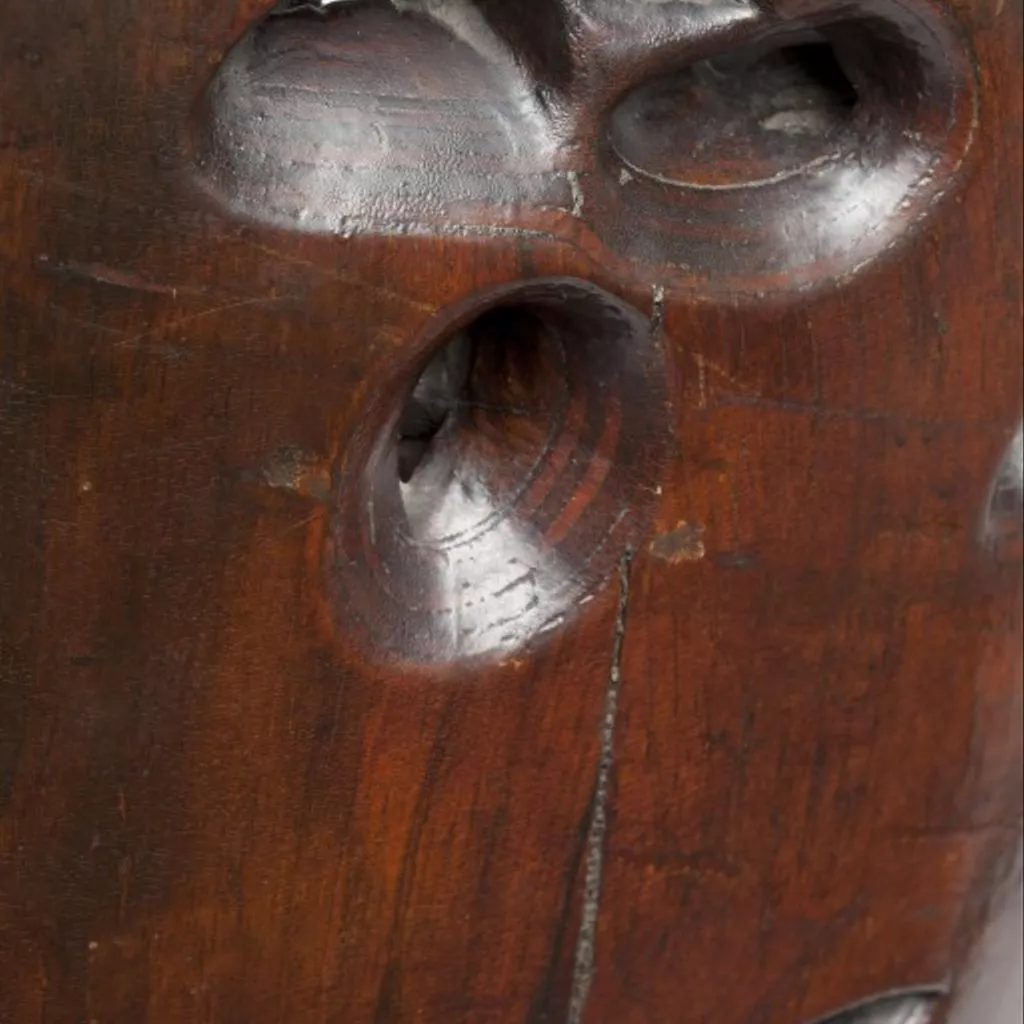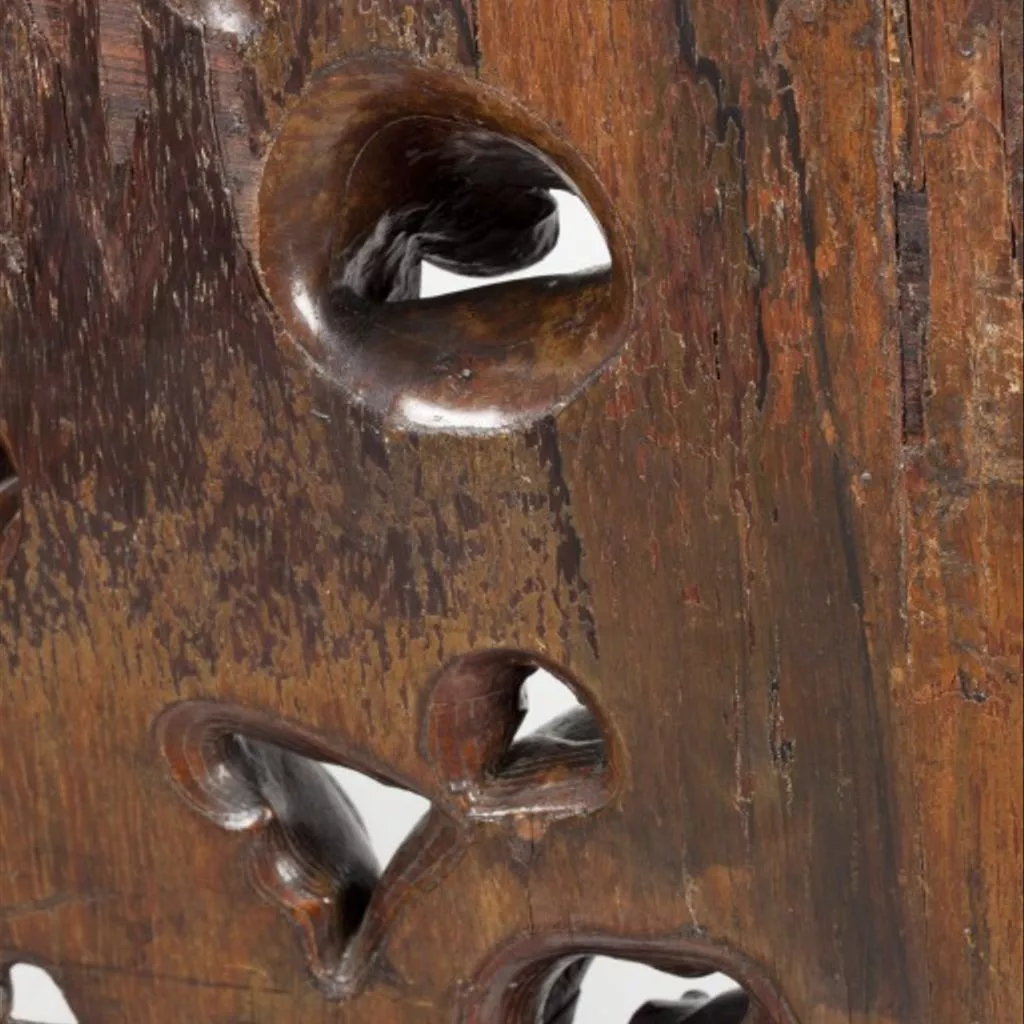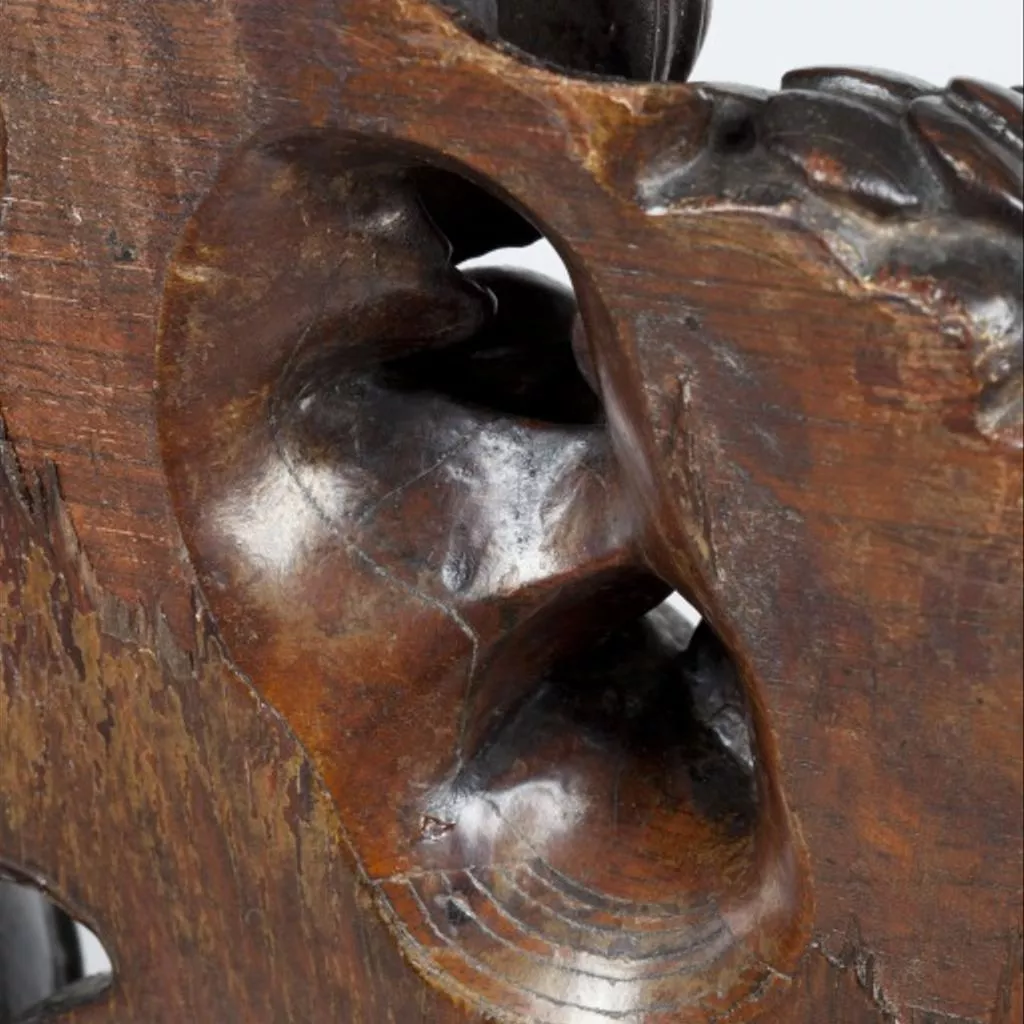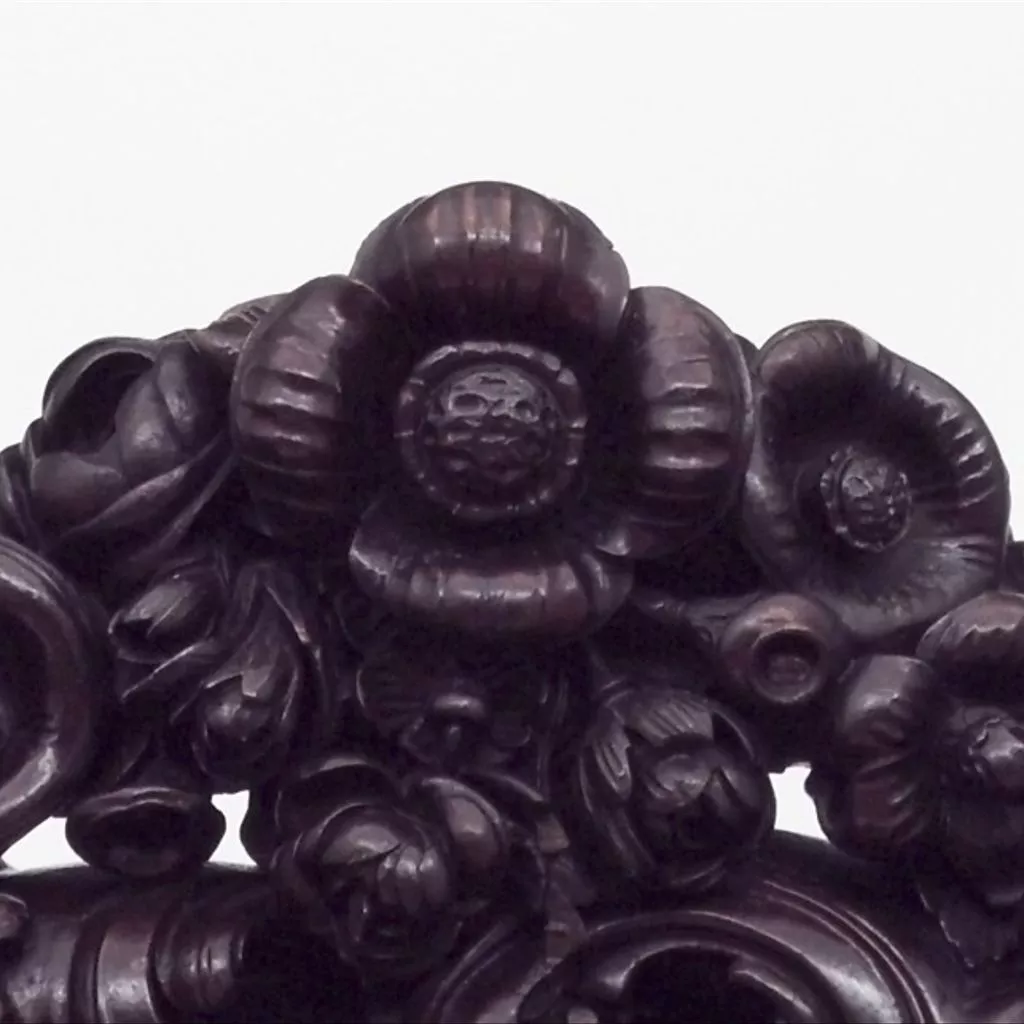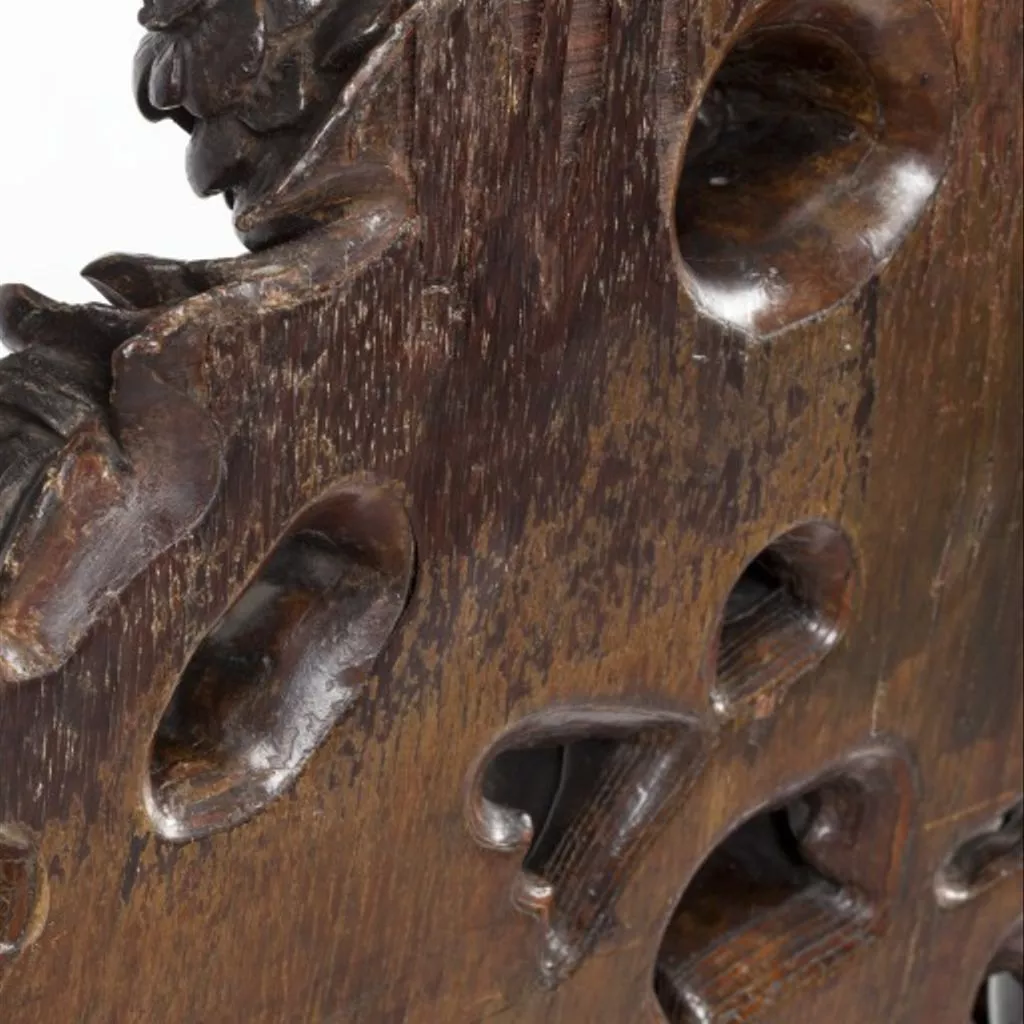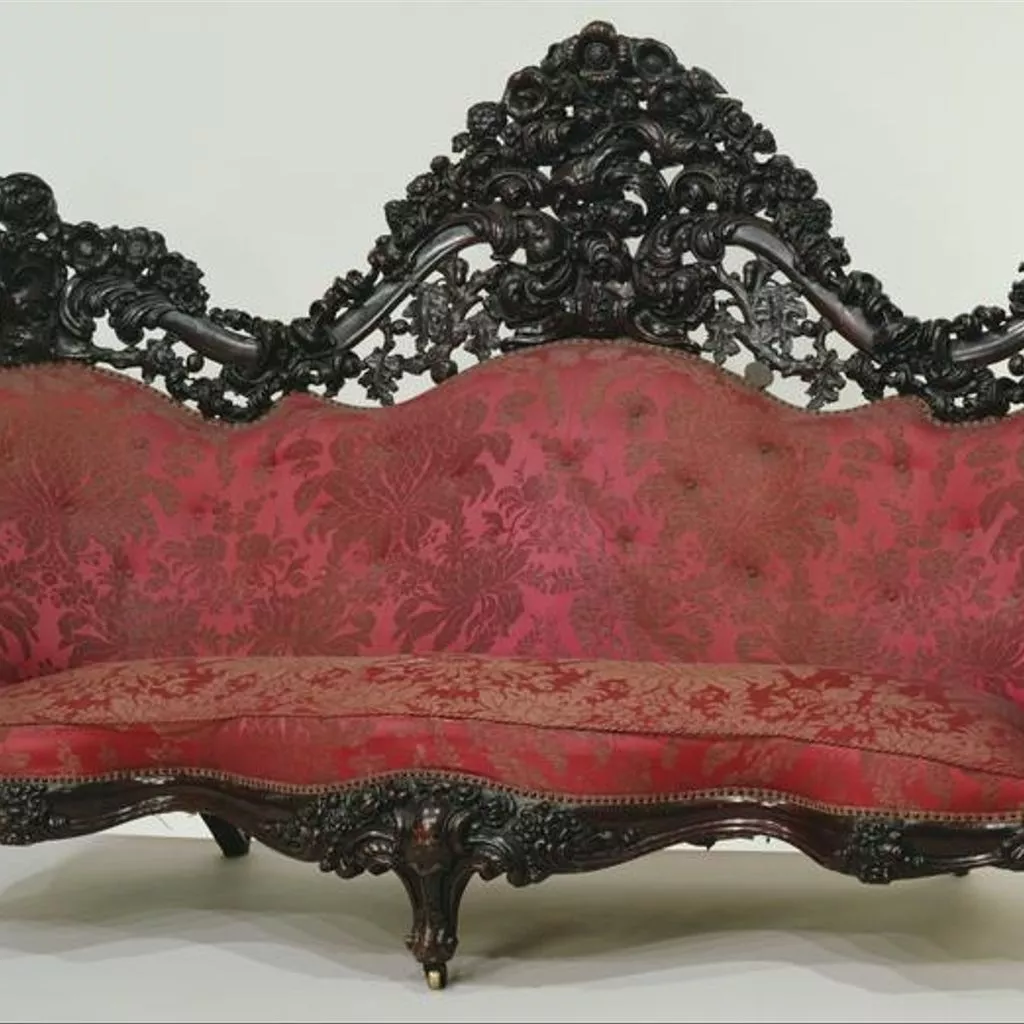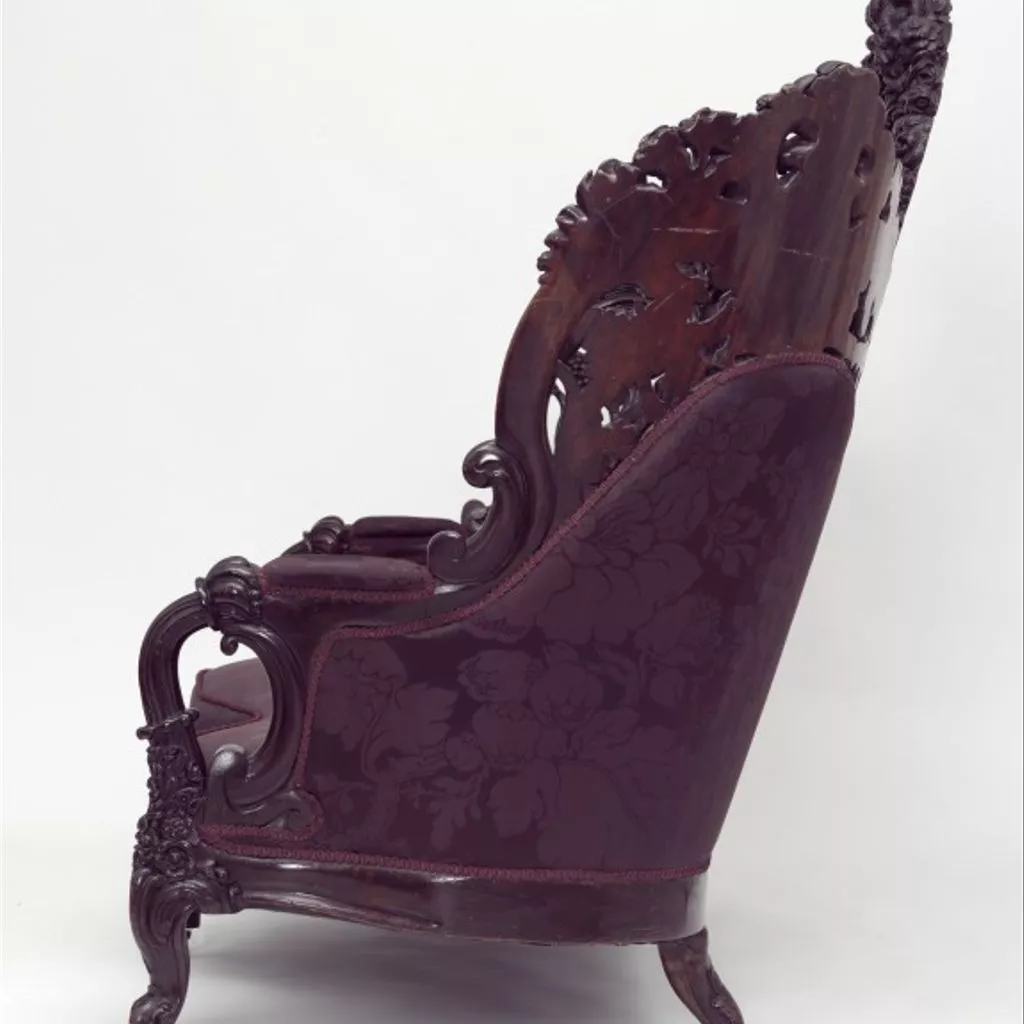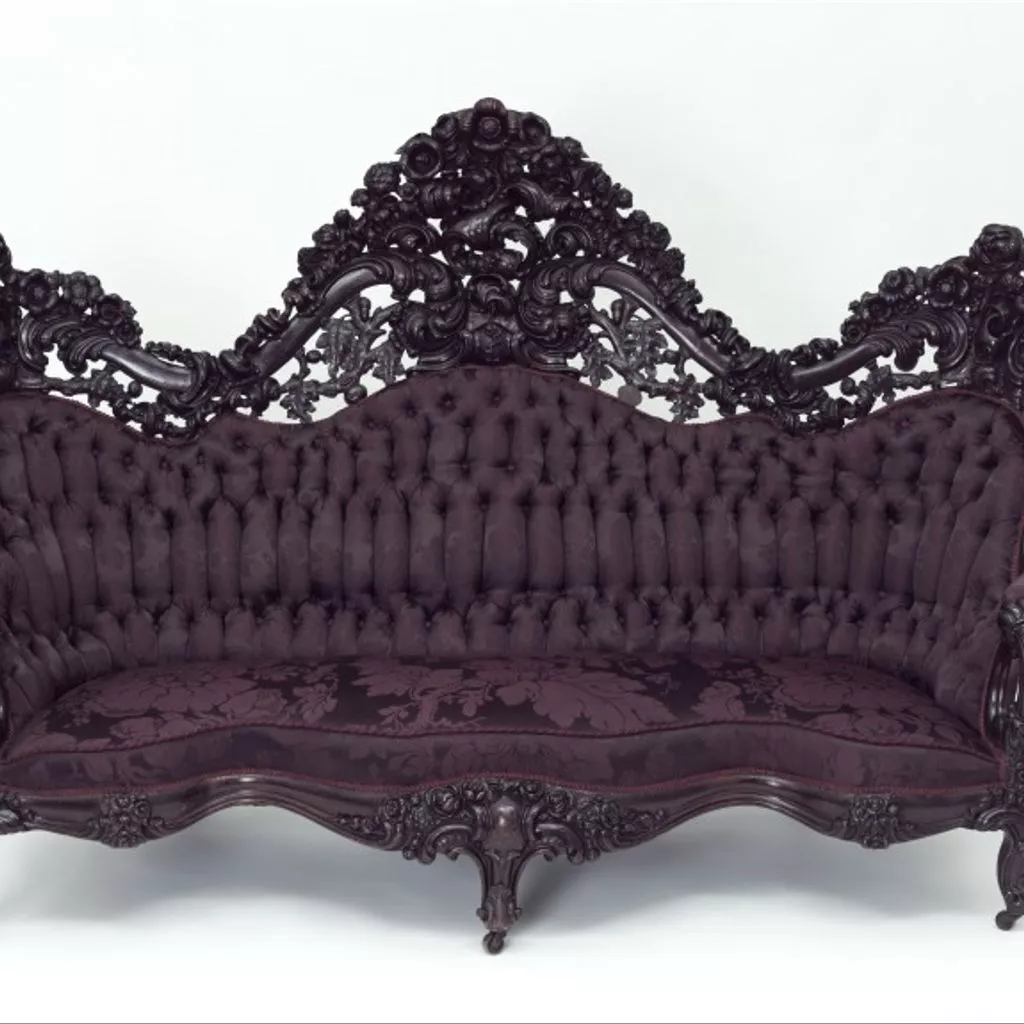Description
SOFA
W.22-1983
'American and European Art and Design 1800-1900'
Belter, born Johann Heinrich Belter in Hanover, Germany, arrived in New York in 1833, where he worked as a cabinet-maker from at least 1844. He took out several patents including three of 1856, 1858 and 1860 concerning laminated construction, of which he was a major pioneer. His works were imitated by several other firms in New York. This is the most elaborate example of his work so far discovered. [1987-2006]
Sofa
About 1856
Designed by John Henry Belter (1804–63)
USA
Manufactured by J.H. Belter & Co., New York City
Rosewood, solid and laminated, carved
Strengthening blocks: varnished chestnut or oak
Upholstery (replacement): silk damask
Museum no. W.22-1983
John Henry Belter is remarkable for his technical innovation, in making furniture using laminated rather than solid wood. Born in Germany, he emigrated to the United States and eventually took out four patents relating to machinery and furniture making.
The back of this ornate Rococo Revival sofa is made from seven large sheets of veneer, glued together to make a laminated board. This construction would have been expensive, but lighter and stronger than an assemblage of carved wood. [01/12/2012]
Sofa, laminated and solid rosewood; New York, ca. 1856. Designed by John Henry Belter and manufactured by J.H. Belter and Company.
Sofa of curvilininar form, with highly carved wooden frame including cresting of flowers, foliage and berries. The back upholstered and buttoned, the seat upholstered, in silk damask (not original). Terminating in six scroll feet on castors.
Laminated and carved rosewood, chestnut or oak strengthening blocks, varnished.
The curvilinear form of this sofa and its rich carvings of flowers, leaves and berries, were inspired by Rococo designs of the mid-eighteenth century. In the mid-nineteenth century the style enjoyed a revival, and John Henry Belter (1804-1863), the German-born designer and maker of this sofa, was a leading force in the Rococo Revival in the USA.
Belter's highly inventive style is epitomised by this sofa. Between 1847 and 1860 he took out numerous patents to protect his property rights in the machinery and processes used in making his furniture, including three connected with the industrial application of lamination in furniture construction. The back of this sofa is made from seven large sheets of veneer, glued together to make a laminated board. This construction would have been expensive, but lighter and stronger than an assemblage of carved wood.
Although Belter's use of laminated wood was unusual, his methods for applying and carving solid wood, and for supporting the back, were typical of heavily ornamented furniture of the period. It is likely, however, that Belter was one of the first - possibly the first - to produce elaborate carvings largely from laminated wood. Between 1847 and 1860 he took out four patents covering machinery and processes for making his furniture.
Belter's use of plywood must have been motivated by a desire to simplify the difficult process of making such large pieces of furniture from solid wood, to save money on the use of expensive rosewood and to manufacture stronger and lighter furniture than was possible with solid wood at this time. It is unlikely, however, that he could ever have envisaged using the technique to make inexpensive furniture in this style. This ornate sofa, for example, must still have been very expensive and would only have been affordable to the upper end of the market.
While some competitors made furniture which bore a closer resemblance to 18th-century French Rococo models, Belter's approach was freer. His was a less antiquarian, more inventive, revivalism. He drew not only on contemporary French furniture but also on furniture from his native Germany. Designs for either were regularly published in specialist magazines.















